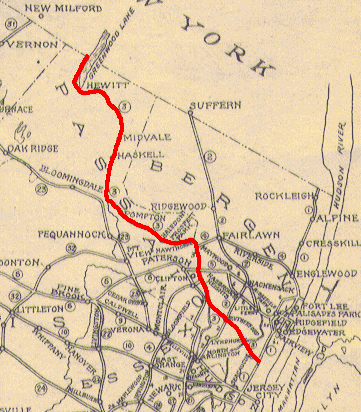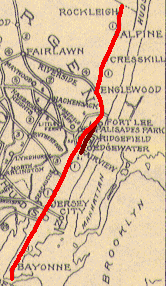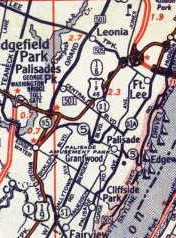 |
ROUTE No. 3. NEW YORK STATE LINE NEAR WESTERLY SIDE OF GREENWOOD LAKE TO SECAUCUS, via vicinity of Hewitt, Midvale, Haskell, Pompton, Haledon, Prospect Park, Hawthorne, Paterson, Westerly side of Passaic River to Ackerman Avenue in City of Clifton, Randolph and Parker Avenues to Passaic, to intersection of Monroe Street and Dundee Canal, covering Canal to Passaic River through Wallington via Maple Avenue, Paterson Plank Road through East Rutherford to Secaucus, terminating at Route No. 1. L. 1927, c. 319.
ROUTE NO. 3. Beginning in the vicinity of Hawthorne and Paterson, passing through Garfield, Wallington, East Rutherford and Secaucus, terminating on Route No. 1 in Secaucus. L. 1929, c. 126, p. 215, s. 3.
ROUTE NO. 3. Beginning in Secaucus and ending at the intersection of the Paterson-Plank Road in the borough of East Rutherford, and beginning again at Route No. 6 in the city of Paterson and ending at the intersection of Route S-4B in either Hawthorne or Glen Rock. Amended by L.1949, c. 292, p. 892, s. 1, eff. May 28, 1949.
3: From junction of Route U. S. 46 (former Route 6) Clifton, via former Route S-3 to junction with Route 20 (former Route 3) East Rutherford, via former Route 3 to Pleasant Avenue, Weehawken, and including section of the former Route 3 from Traffic Circle at Routes U. S. 1-9 to the intersection of the approach road to the Lincoln Tunnel. 1953 renumbering. |



